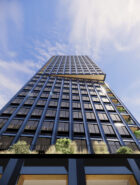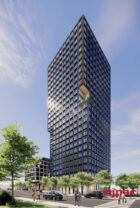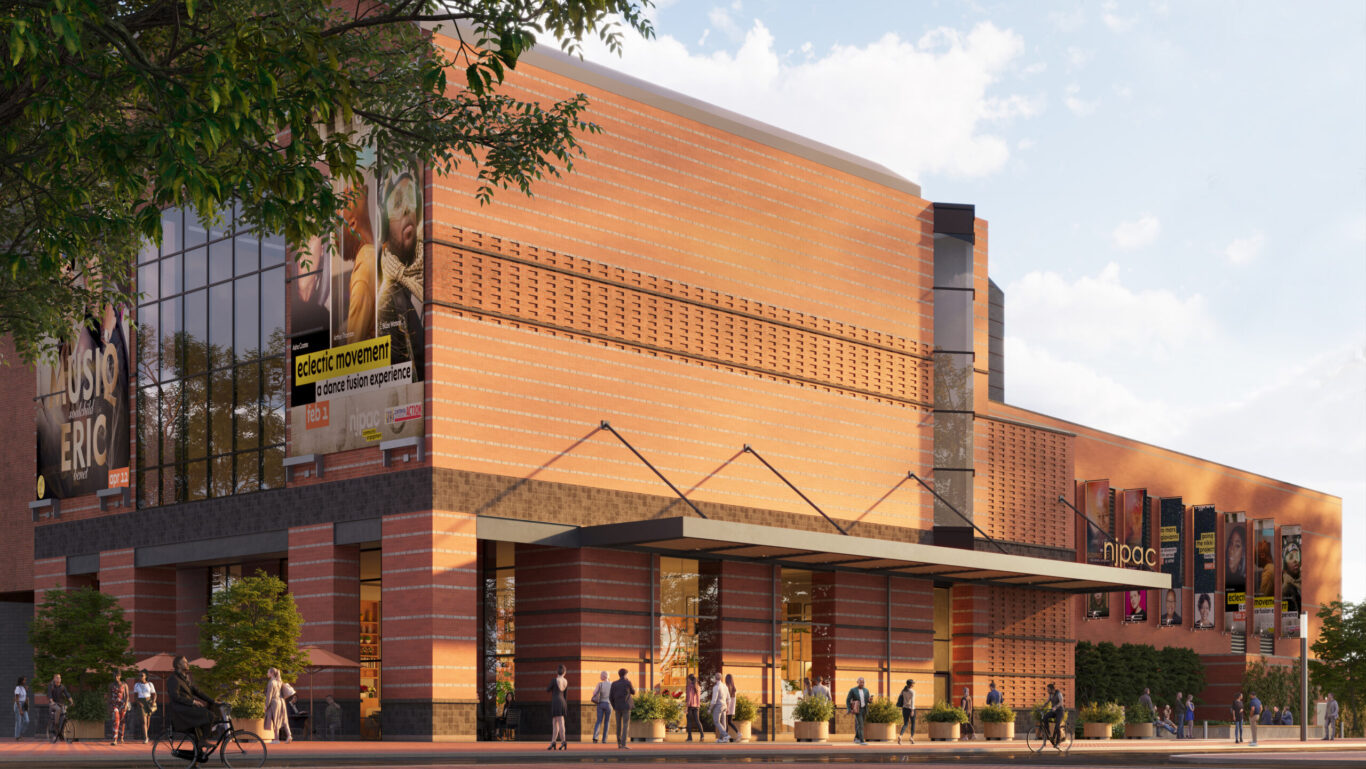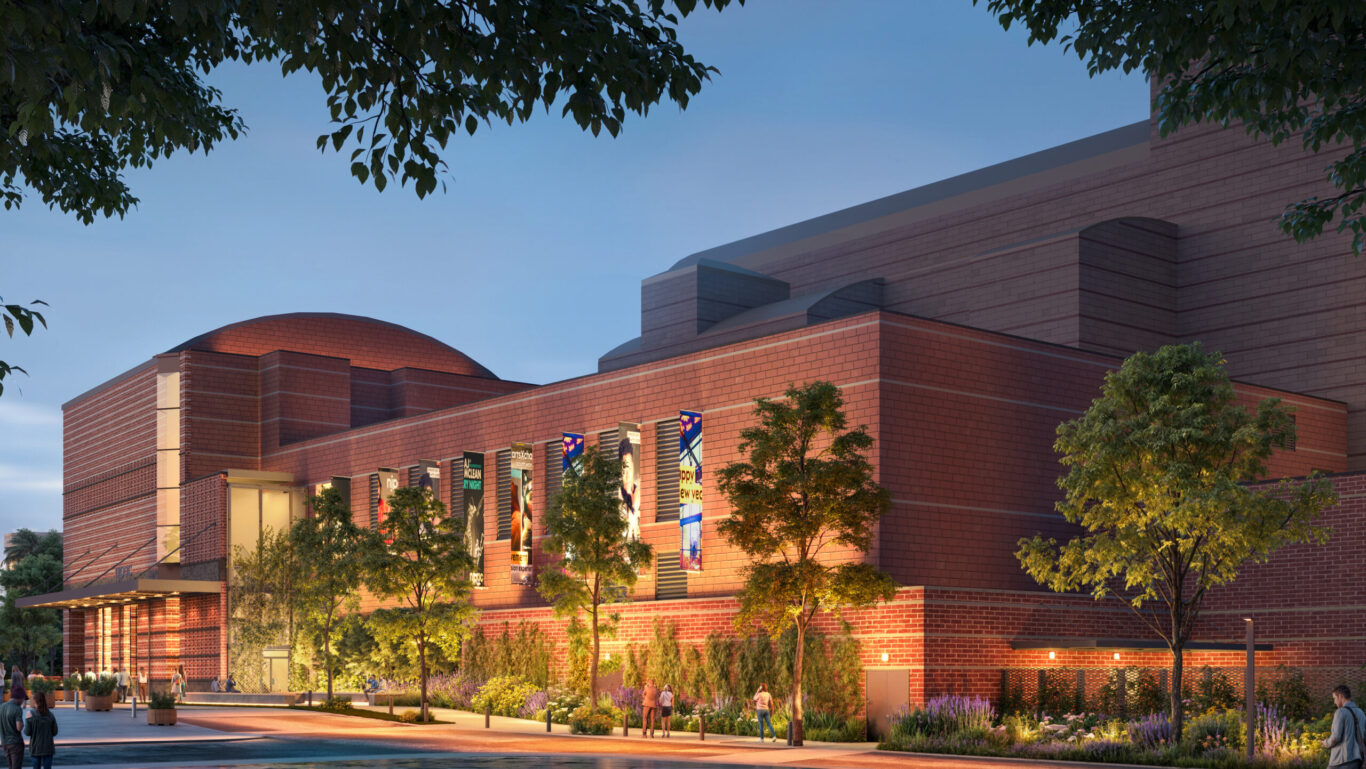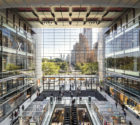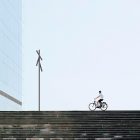Creating an equitable campus
The New Jersey Performing Arts Center’s (NJPAC) commitment to downtown Newark is central to its mission. Originally proposed in SOM’s master plan, the center was designed to create a hub of activity in the heart of the city and revitalize the surrounding neighborhoods. More than 35 years later, NJPAC, Center Street Owners, L+M Development Partners, and Prudential Impact & Responsible Development are driving that vision forward.
SOM is designing 17 residential buildings of different scales for people at all income levels, with shared public spaces and a renovation of NJPAC itself. This renovation will connect the center to the residences and to the new Cooperman Family Arts Education and Community Center designed by Weiss/Manfredi. Just a short walk from the NJPAC/Center Street station, the new park and plaza are designed with the potential to serve as performance spaces themselves.


